How to Navigate the Fraction Jungle: A Guide to Adding Fractions with Unlike Denominators
Fractions are everywhere – from dividing a pizza among friends to measuring ingredients in a recipe. But what happens when we need to add fractions with different denominators?
[include_netrun_products_block from-products="product/6-south-carolina-sc-ready-grade-3-math-practice-tests/" product-list-class="bundle-products float-left" product-item-class="float-left" product-item-image-container-class="p-0 float-left" product-item-image-container-size="col-2" product-item-image-container-custom-style="" product-item-container-size="" product-item-add-to-cart-class="btn-accent btn-purchase-ajax" product-item-button-custom-url="{url}/?ajax-add-to-cart={id}" product-item-button-custom-url-if-not-salable="{productUrl} product-item-container-class="" product-item-element-order="image,title,purchase,price" product-item-title-size="" product-item-title-wrapper-size="col-10" product-item-title-tag="h3" product-item-title-class="mt-0" product-item-title-wrapper-class="float-left pr-0" product-item-price-size="" product-item-purchase-size="" product-item-purchase-wrapper-size="" product-item-price-wrapper-class="pr-0 float-left" product-item-price-wrapper-size="col-10" product-item-read-more-text="" product-item-add-to-cart-text="" product-item-add-to-cart-custom-attribute="title='Purchase this book with single click'" product-item-thumbnail-size="290-380" show-details="false" show-excerpt="false" paginate="false" lazy-load="true"]

While it might seem a bit tricky at first, with a systematic approach, it becomes a piece of cake. In this post, we’ll break down the steps to successfully add fractions with unlike denominators.
Step-by-step Guide:
1. Understanding the Fraction Structure:
A fraction consists of a numerator (the top number) and a denominator (the bottom number). The denominator indicates the total number of equal parts, while the numerator tells us how many of those parts we’re considering.
2. Identifying Unlike Denominators:
If two fractions have different denominators, they have unlike denominators. For instance, in the fractions \(\frac{2}{3}\) and \(\frac{4}{5}\), the denominators 3 and 5 are different.
3. Finding the Least Common Denominator (LCD):
The LCD is the smallest number that both denominators can divide into. It ensures that we’re working with fractions that describe parts of the same size. For our example, the LCD for 3 and 5 is 15.
4. Adjusting the Fractions to the LCD:
Multiply the numerator and denominator of each fraction by the factor needed to achieve the LCD. For \(\frac{2}{3}\), multiply both the numerator and denominator by 5 to get \(\frac{10}{15}\). For \(\frac{4}{5}\), multiply both by 3 to get \(\frac{12}{15}\).
5. Adding the Fractions:
Now that the fractions have the same denominator, simply add their numerators. Using our example, \(10 + 12 = 22\). So, \(\frac{2}{3} + \frac{4}{5} = \frac{22}{15}\), which can be expressed as \(1 \frac{7}{15}\).
Example 1:
Add \(\frac{1}{4}\) and \(\frac{2}{8}\).
Solution:
The LCD is 8. Adjusting the fractions, \(\frac{1}{4}\) becomes \(\frac{2}{8}\). So, \(\frac{1}{4} + \frac{2}{8} = \frac{4}{8}\), which simplifies to \(\frac{1}{2}\).
The Absolute Best Book for 5th Grade Students
Example 2:
Add \(\frac{3}{6}\) and \(\frac{1}{3}\).
Solution:
The LCD is 6. The fraction \(\frac{3}{6}\) remains the same, while \(\frac{1}{3}\) becomes \(\frac{2}{6}\). So, \(\frac{3}{6} + \frac{1}{3} = \frac{5}{6}\).
Practice Questions:
1. Add \(\frac{1}{5}\) and \(\frac{2}{10}\).
2. Add \(\frac{3}{7}\) and \(\frac{2}{14}\).
3. Add \(\frac{4}{9}\) and \(\frac{2}{3}\).
A Perfect Book for Grade 5 Math Word Problems!
Answers:
1. \(\frac{3}{10}\)
2. \(\frac{4}{7}\)
3. \(\frac{10}{9}\) or \(1 \frac{1}{9}\)
The Best Math Books for Elementary Students
Related to This Article
More math articles
- 10 Most Common 3rd Grade FSA Math Questions
- How to Evaluate Variable Expressions for Number Sequences
- Full-Length 6th Grade PARCC Math Practice Test
- ASVAB Math-Test Day Tips
- How to Prepare for the PSAT Math Test?
- How to Find Angles of Quadrilateral Shapes?
- FREE CLEP College Math Practice Test
- Top 5 Books for math teachers
- Full-Length 6th Grade ACT Aspire Math Practice Test-Answers and Explanations
- 5 Best Accuplacer Math Study Guides
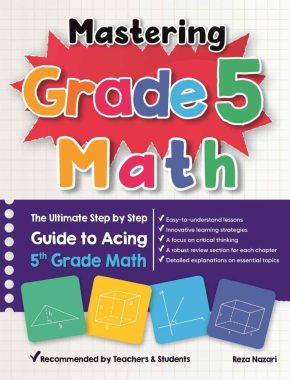
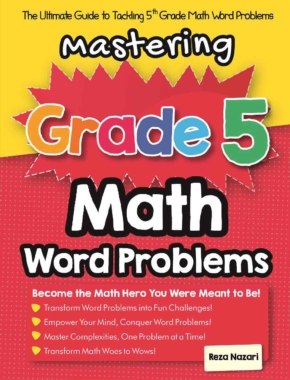
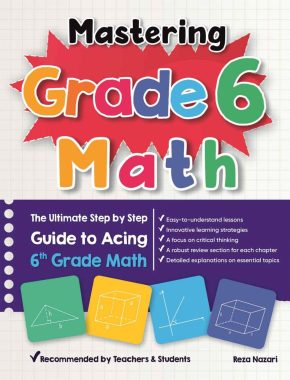
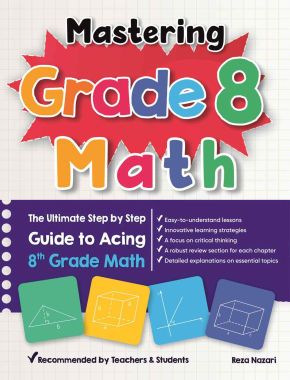
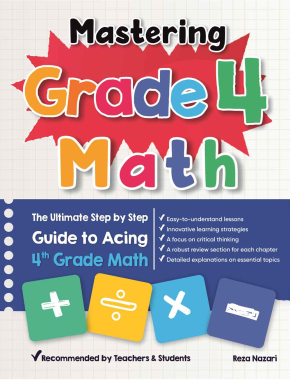
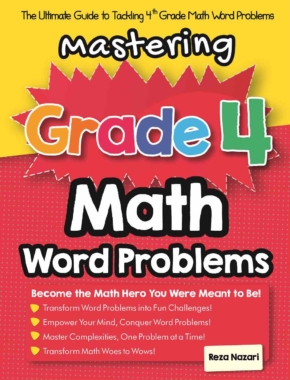




What people say about "How to Navigate the Fraction Jungle: A Guide to Adding Fractions with Unlike Denominators - Effortless Math: We Help Students Learn to LOVE Mathematics"?
No one replied yet.